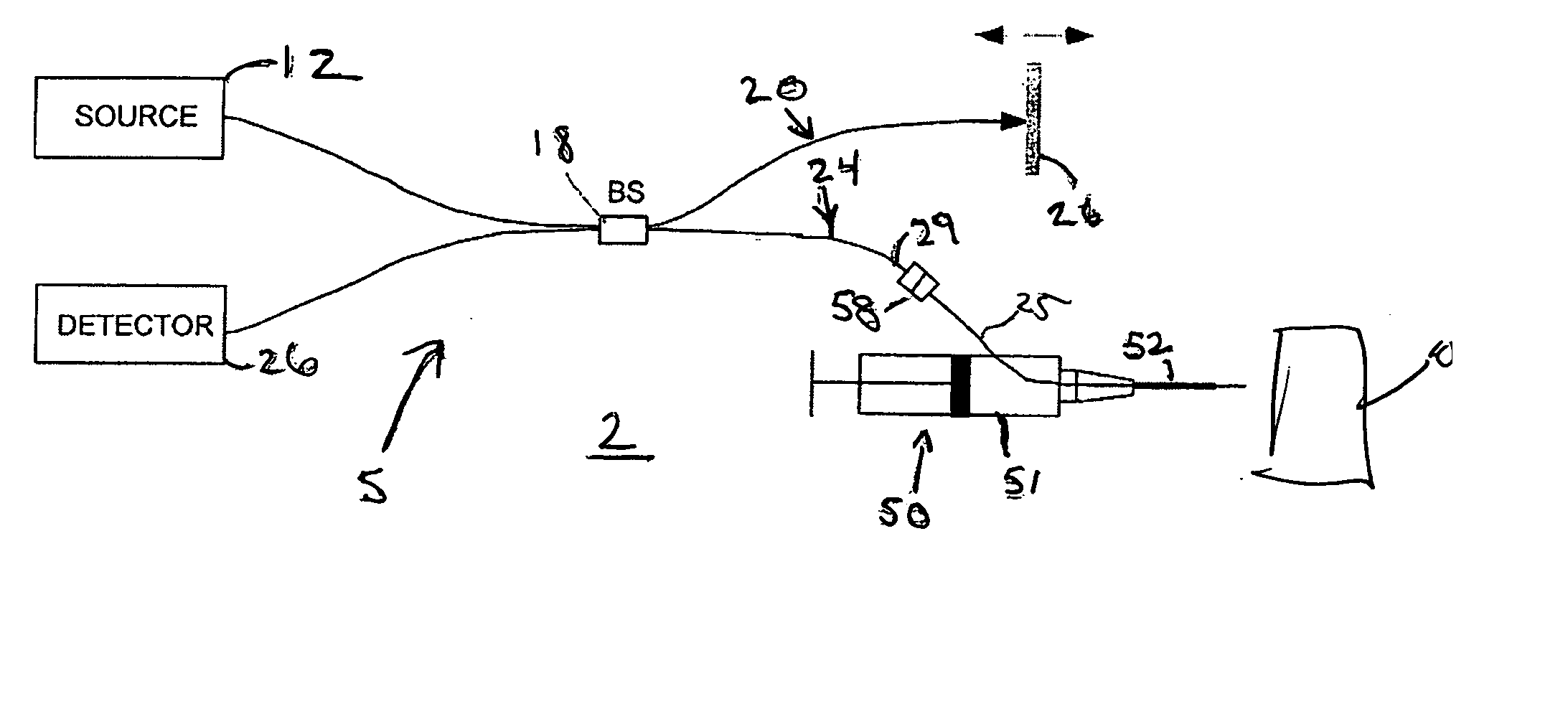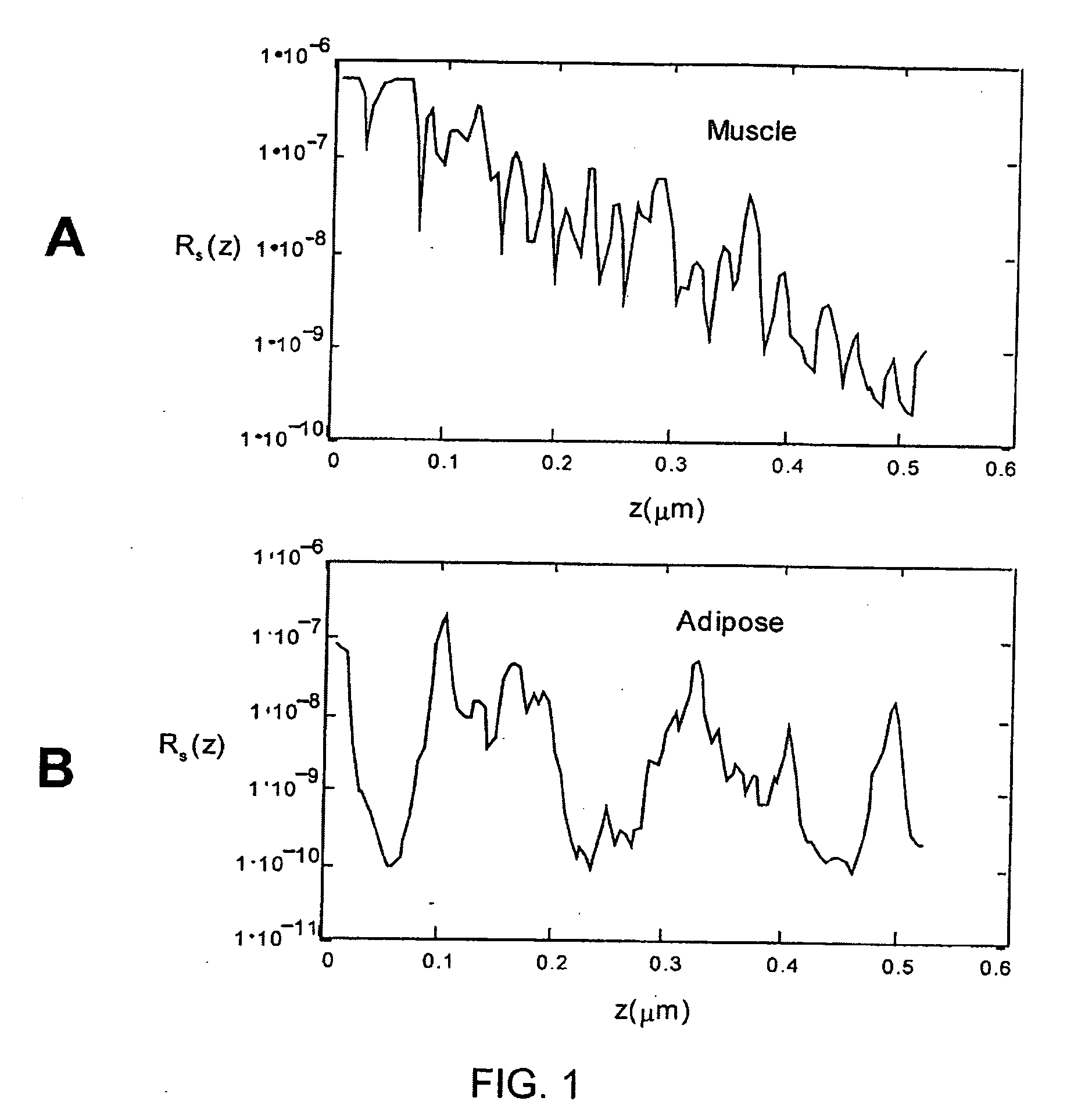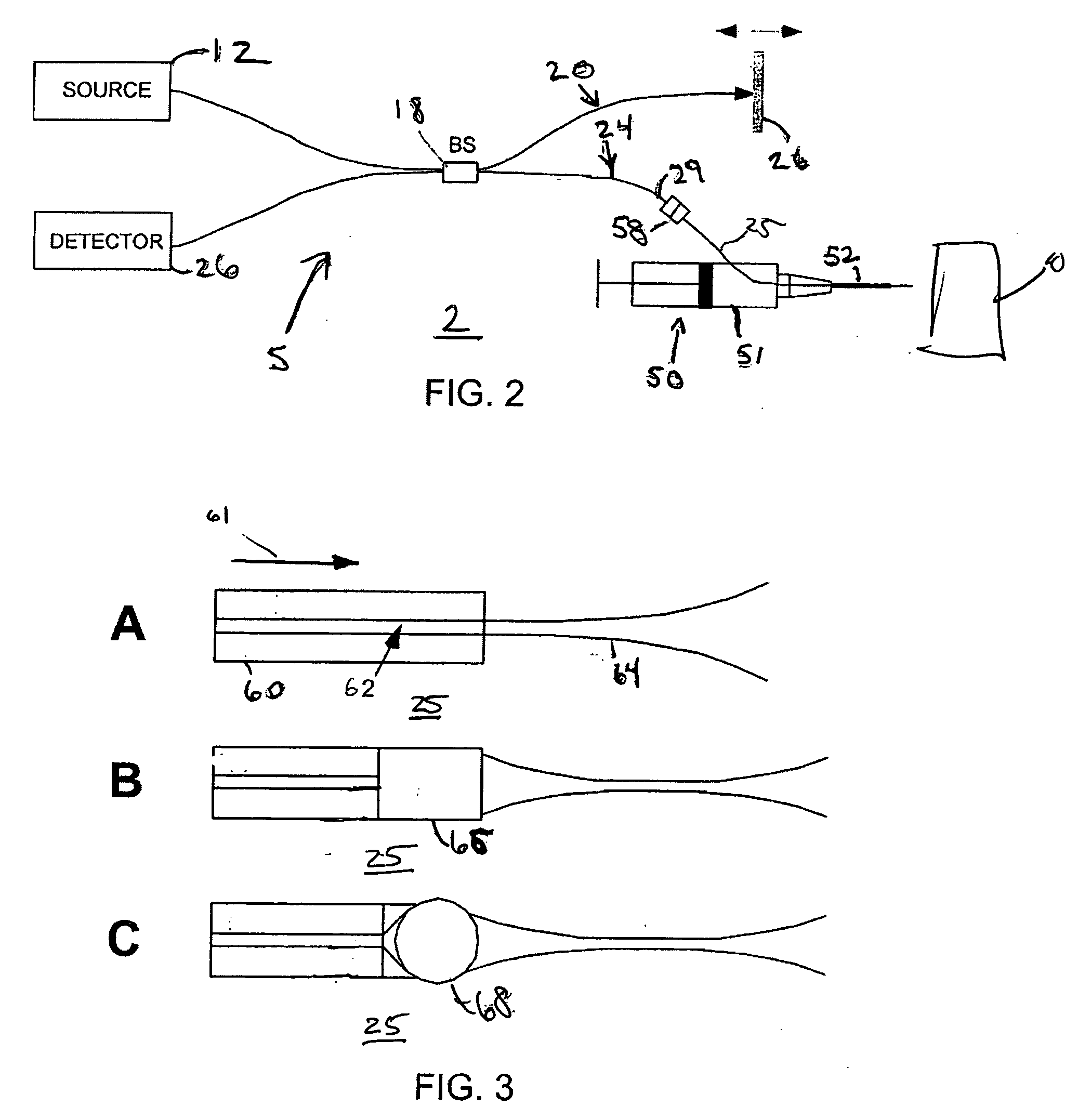System and method for identifying tissue using low-coherence interferometry
- Summary
- Abstract
- Description
- Claims
- Application Information
AI Technical Summary
Benefits of technology
Problems solved by technology
Method used
Image
Examples
Embodiment Construction
In accordance with the system of the present invention, FIG. 2 illustrates an tissue identification system 2 according to one embodiment of the present invention for tissue 10 identification using interferometric ranging. The tissue identification system 2 utilizes a one-dimensional data set in order to identify tissue. Unlike many prior art systems, which use two-dimensional data in order to acquire sufficient information to identify tissue, the tissue identification system 2 is able to identify tissue using a one-dimensional data set. Differences between two types of tissue may be understood from a one-dimensional data set. For example, FIG. 1 illustrates two graphs that represent a one-dimensional interferometric ranging axial scan of two different tissue types. As can be seen from these graphs, adipose tissue (shown in the bottom graph) has a significantly different axial reflectance profile as compared to the axial reflectance profile of muscle tissue (shown in the top graph)....
PUM
 Login to View More
Login to View More Abstract
Description
Claims
Application Information
 Login to View More
Login to View More - R&D
- Intellectual Property
- Life Sciences
- Materials
- Tech Scout
- Unparalleled Data Quality
- Higher Quality Content
- 60% Fewer Hallucinations
Browse by: Latest US Patents, China's latest patents, Technical Efficacy Thesaurus, Application Domain, Technology Topic, Popular Technical Reports.
© 2025 PatSnap. All rights reserved.Legal|Privacy policy|Modern Slavery Act Transparency Statement|Sitemap|About US| Contact US: help@patsnap.com



